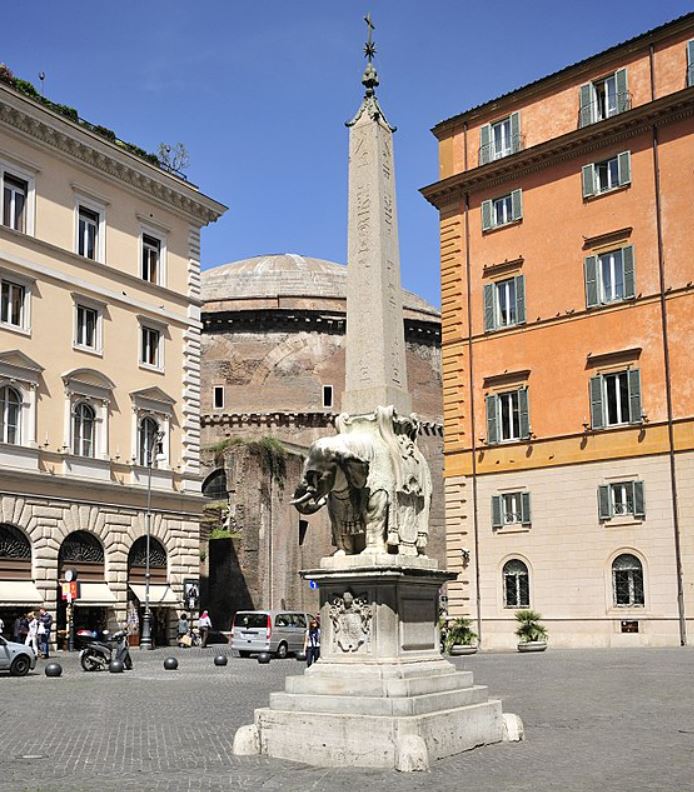There are plenty of beautiful landmarks in Rome, a city that makes you feel as if you are walking in a huge open-air museum.
No city in the world features as many ancient obelisks as the capital city of Italy. These include 8 ancient Egyptian obelisks and 5 ancient Roman obelisks.
These are accompanied by several modern structures that resemble these ancient monuments and which can be found all around the city.
In my opinion, obelisks are far from the greatest feat of architecture in history. These large, 4-sided pillars with a pointy top section are not that impressive by themselves.
The fact that these were erected without the use of modern tools and transported using specially-designed obelisk ships certainly is.
In this article, I’ve compiled a list of 10 ancient obelisks in Rome that you simply have to see during your visit.
1. Lateran Obelisk
- Date created: 15th century B.C.
- Height: 32.18 meters (105.6 feet)
- Location: Piazza San Giovanni in Laterano
The Lateran Obelisk is the tallest ancient obelisk that still stands today. It’s located on the square in front of the famous Archbasilica of St. John Lateran after which it was named, and has decorated this square since it was reerected in 1588.
This ancient Egyptian monument originally decorated the Karnak Temple in southern Egypt and was constructed by Thutmose III and his grandson Thutmose IV. It was brought to Rome in the 4th century and decorated the spinal of the Circus Maximus.

2. Vatican Obelisk
- Date created: Unknown
- Height: 25.5 meters (83.66 feet)
- Location: St. Peter’s Square
The Vatican Obelisk is another ancient Egyptian monument of which the origins remain a mystery today. It was erected at the Forum Iulium in Alexandria during the reign of the first Roman Emperor Augustus and brought to Rome by Caligula around 40 A.D. to decorate the spinal of the Circus of Nero.
What’s remarkable is that it was relocated around the same time as the Lateran Obelisk in the 1580s to its current location. Pope Sixtus V commissioned this endeavor and it became the first ancient obelisk to be erected in the modern world.
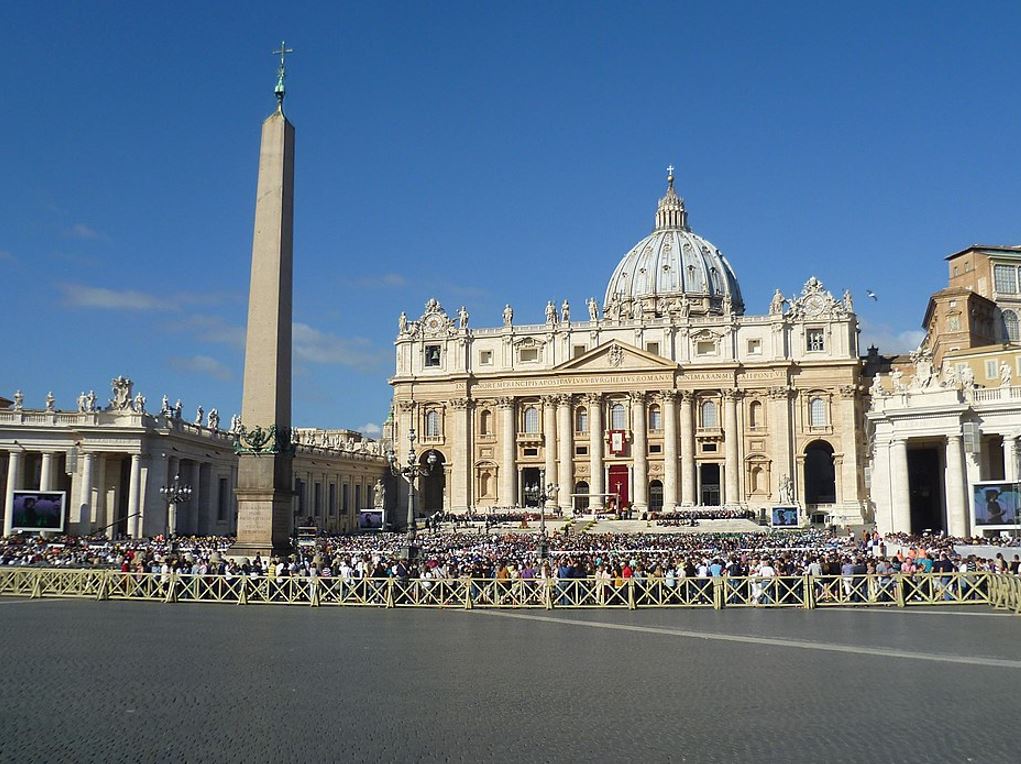
3. Agonal Obelisk
- Date created: Late 1st century A.D.
- Height: 16.53 meters (54.23 feet)
- Location: Piazza Navona
The Agonal Obelisk is an ancient Roman obelisk that was commissioned by Roman Emperor Domitian in the late 1st century A.D. It originally stood at the Temple of Serapis near the Circus of Domitian. This entertainment venue was located below the modern-day Piazza Navona in the heart of the city.
The obelisk was later moved to the Circus of Maxentius by the Roman emperor with the same name. What’s remarkable is that it was nearly shipped to England in the 17th century but the expert was blocked by Pope Urban VIII in the 1630s. Today, it stands on top of the Fontana dei Quattro Fiumi, a fountain in Rome that was sculpted by Bernini.

4. Flaminio Obelisk
- Date created: 13th century B.C.
- Height: 24 meters (67 feet)
- Location: Piazza del Popolo
The Flaminio Obelisk is the centerpiece of the beautiful Piazza del Popolo in the Flaminio district of Rome. It’s another ancient Egyptian obelisk that was commissioned by pharaoh Seti I, a ruler of the Nineteenth Dynasty of the New Kingdom.
The obelisk was erected to decorate the Temple of Re in Heliopolis. This was a major ancient Egyptian city that was located in the northeastern suburbs of modern-day Cairo. It was brought to Rome by Augustus and decorated the Circus Maximus before being erected in its current location in 1589 by Pope Sixtus V.
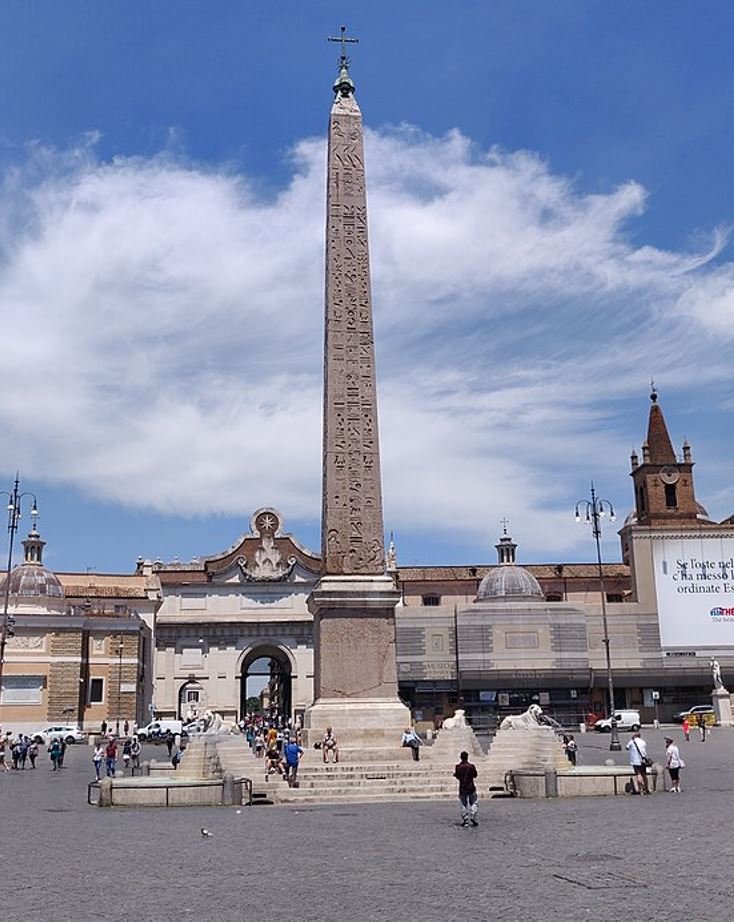
5. Quirinal Obelisk
- Date created: Unknown
- Height: 14.63 meters (47.99 feet)
- Location: Piazza del Quirinale
The Quirinal Obelisk is one of the obelisks that was bought to Rome from Egypt but it’s not exactly sure when this happened. What we do know is that it was erected next to the Mausoleum of Augustus, the famous mausoleum of the Roman Emperor.
The obelisk was rediscovered in 1527 and placed in front of the Basilica of Santa Maria Maggiore in 1587. It was erected in its current location in 1786 by Pope Pius VI on Quirinal Hill, the location of the huge Quirinal Palace. The nearby statues are also ancient and once decorated the Baths of Constantine.
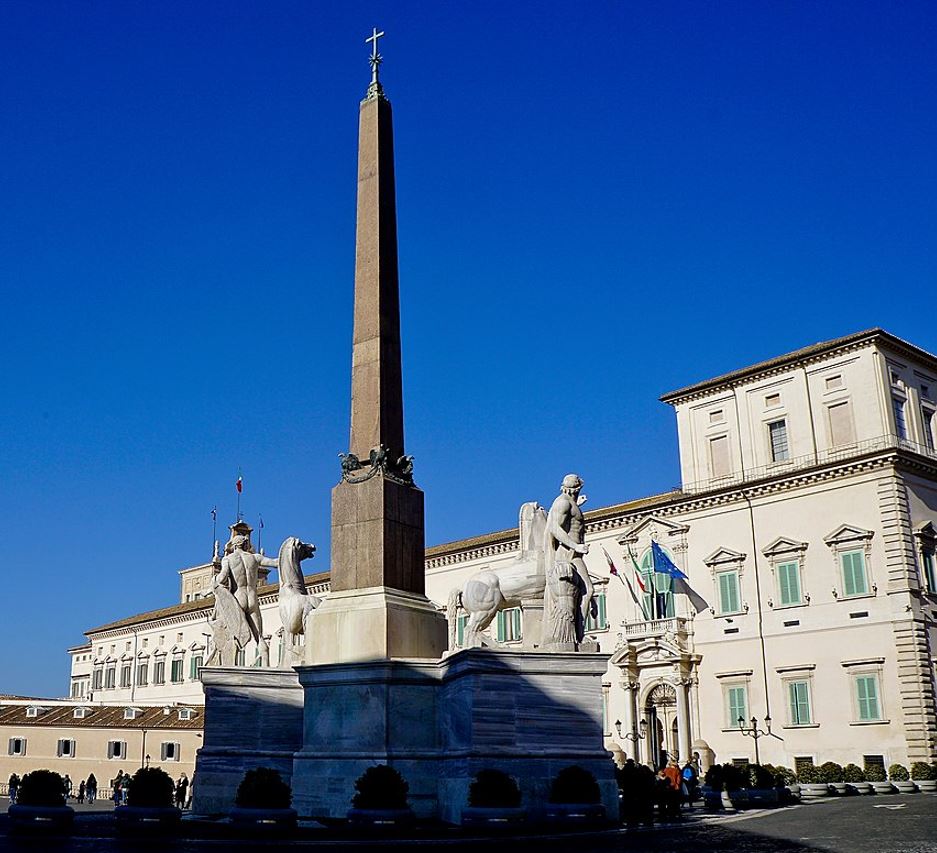
6. Esquiline Obelisk
- Date created: 1st century A.D.
- Height: 14.75 meters
- Location: Piazza dell’Esquilino
The Esquiline Obelisk is another ancient obelisk that was placed on the opposite side of the Mausoleum of Augustus. The Quirinal Obelisk decorated the eastern part while this one once stood on the western part of this huge ancient structure in Rome.
This also means that it was discovered around the same time in the late 1520s and erected in its current location in the late 1580s. It stands on the square at the back of the Basilica of Santa Maria Maggiore, a papal basilica that serves as one of the Seven Pilgrim Churches of Rome.

7. Obelisk of Montecitorio (Solare)
- Date created: 6th century B.C.
- Height: 21.79 meters (71 feet)
- Location: Piazza Montecitorio
The Obelisk of Montecitorio was originally erected during the reign of Egyptian ruler Psamtik II (595–589 B.C.) in the ancient Egyptian city of Heliopolis. It was brought to Rome together with the Flaminio Obelisk during the reign of Augustus in 10 B.C.
What’s fascinating about this obelisk is that Augustus had a specific purpose to bring it to Rome. It served as the huge gnomon of the Solarium Augusti, a monument on Campus Martius that was used as a large solar marker. Because of this, it’s also known as the “Solare.”
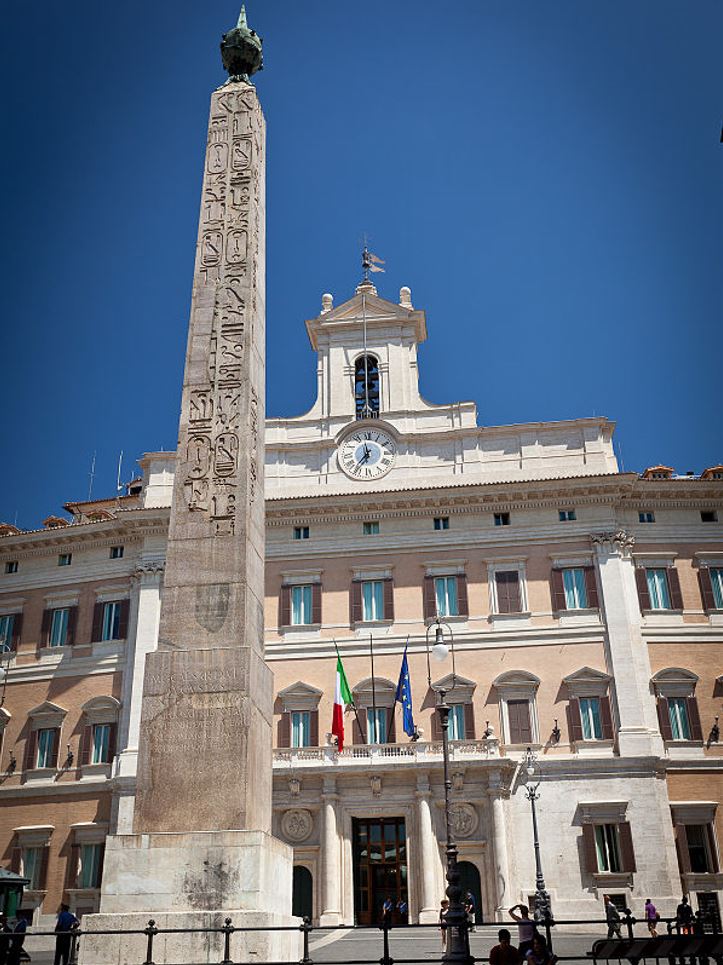
8. Macuteo Obelisk
- Date created: 13th century B.C.
- Height: 6.34 meters (20.8 feet)
- Location: Piazza della Rotonda
The Macuteo Obelisk is one of the shorter ancient Egyptian obelisks in Rome. This lack of height is compensated by the fact that it’s located on the Piazza delle Rotonda in front of one of the greatest temples in Rome, the Pantheon.
Originally constructed during the reign of the famous Egyptian Pharaoh Ramses II, it once decorated the Temple of Ra in Heliopolis. It was brought to Rome and placed next to the Temple of Isis near Santa Maria Sopra Minerva. It was discovered in 1373 but not erected in its current location until 1711.
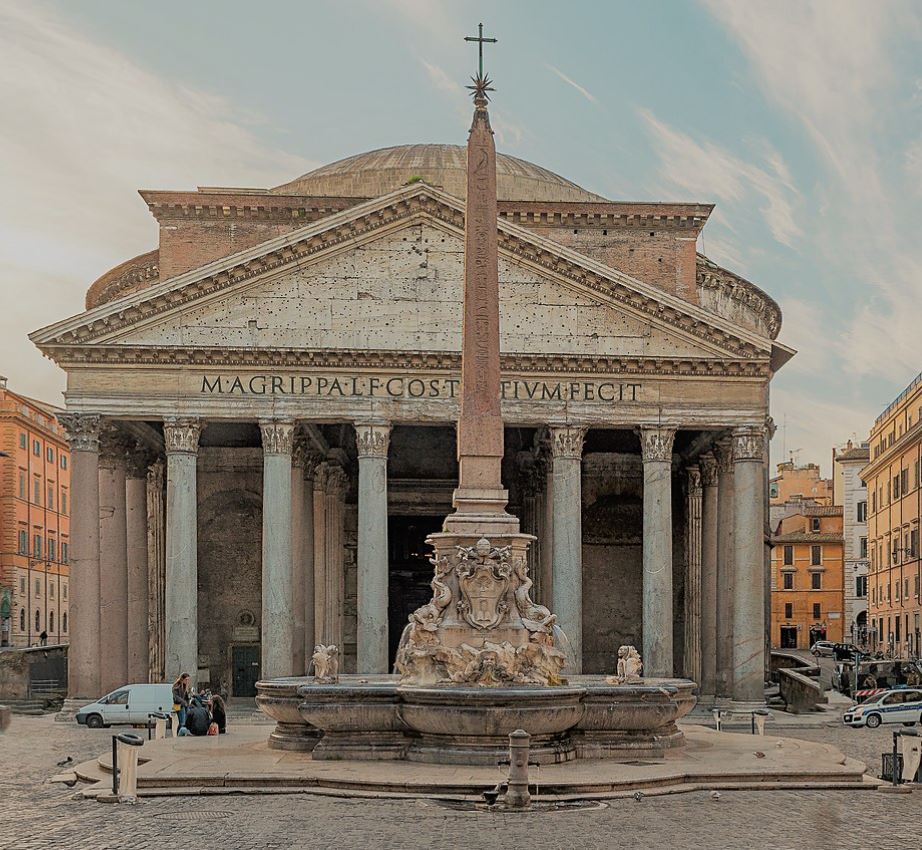
9. Sallustiano Obelisk
- Date created: 270s A.D.
- Height: 13.91 meters (45.63 feet)
- Location: Piazza della Trinità dei Monti
The Sallustiano Obelisk is an ancient Roman Obelisk that is believed to have been erected during the short reign of Roman Emperor Aurelian between 270 and 275 A.D. It’s likely a smaller copy of the Flaminio Obelisk in the Piazza del Popolo and intended to decorate a landscaped pleasure garden called the Gardens of Sallust.
While this was more than likely a beautiful location for this ancient monument, nothing compares to where it was placed by Pope Pius VI in 1789. It stands majestically on top of the famous Spanish Steps, right in front of the Trinità dei Monti church.

10. Elephant and Obelisk
- Date created: 580 B.C.
- Height: 5.47 meters (17.94 feet)
- Location: Piazza della Minerva
Elephant and Obelisk is the name given to a sculpture by Bernini that features an ancient Egyptian obelisk on top of it. This obelisk was originally erected in the ancient Egyptian city of Sais by Pharaoh Apries of the Twenty-sixth Dynasty of Egypt.
The relatively small obelisk was only discovered in the year 1665 and Bernini almost instantly started working on the project which was completed in 1667. As you can see, it’s located in Piazza della Minerva which is very near to the magnificent dome of the nearby Pantheon.
